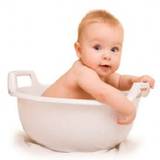Shop
01970
https://www.under5s.co.nz/shop/Hot+Topics+Articles/Health+%26+Wellbeing/Keeping+Your+Child+Safe.html
Keeping your child safe – what to look out
|
Unfortunately New Zealand does not have a great safety record when it comes to childhood accidents. We take a look at providing the safest environments for babies, toddlers and pre-schoolers to explore in and what risks you need to look out for.
|
You might also be interested in ...
Baby bath time essentials
So what do you need when it comes to bathing your baby? Check out these essential baby bath time items to help make your life a little easier.
Baby swaddling techniques
Check out these swaddling techniques on how to swaddle a baby. Swaddling simply means wrapping a baby securely. Swaddling is a great technique to calm a fussy baby and makes settling to sleep much easier. Many babies enjoy being swaddled well past 6 months old. There are many different ways to swaddle, but try these two different techniques and see which works best for you.
join usJoin us on social media for all our latest news. |
sign upSign up and receive our latest newsletters. |
|







But children being their natural adventurous selves need to be kept safe.
Safety is not about stopping children from being active and curious, it’s about providing the safest environment to explore in.
It comes down to common sense, supervision and being aware of potential hazards.
New Zealand does not have a great safety record when it comes to accidents. In fact we have the highest incident rate of driveway deaths.
There are some sobering statistics around child safety; every year 4800 children are injured severely enough in falls that they require hospitalisation and around 330 children are hospitalised with burns.
What are some of the risks for infants?
Infants are completely dependent on us to keep them safe. As they are not yet mobile many of the risks come from the environment. Here are 6 safety tips for infants:
What are some of the risks for toddlers?
Toddlers are becoming more mobile and curious so it’s a time to relook at the environment for preventing accidents:
What are some of the risks for pre-schoolers?
Pre-schoolers are starting to become aware of their own safety but still need careful supervision. They can be involved in their own safety such as taking part in a family fire drill.
Tell your friends
Like the article you've just been reading? Click on the Refer A Friend link at the top of the page and send the details to friends who might like to read it too.More Hot Topics for you to enjoy
Source: This article has been written by Creators, a nationwide service offering quality home-based care and education. Creators are passionate about seeing every child’s unique talent being recognized and nurtured.